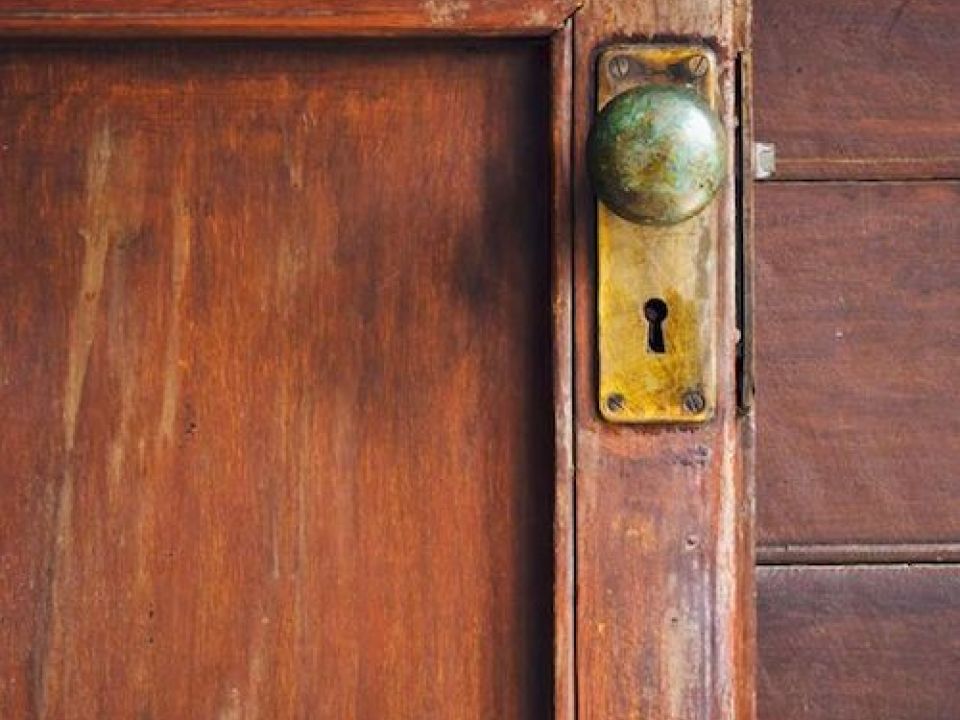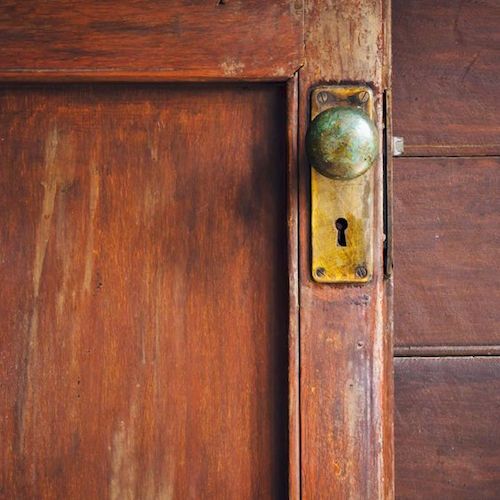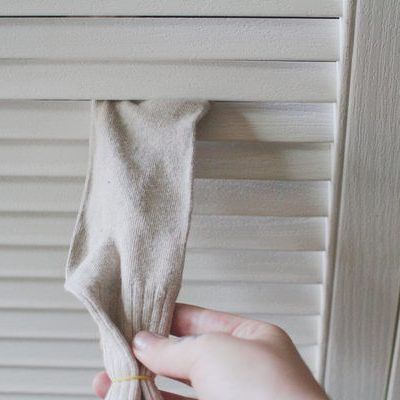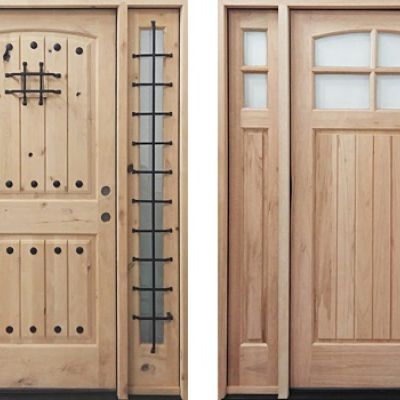How To Restore A Vintage Door? – OldEnglishDoors

 We're actually closed, as are the majority of companies. Even if it absolutely stinks, we've been able to complete a number of long-lag projects around Uk.
For the first time, we wanted to restore our front door. We have a Victorian from 1901 who has been robbed of his "Victorian" charm for a long time. The entrance, on the other hand, appears to be a house original. It's difficult to say because there are a few antique finishes that obscure the wood grain. However, we had similar style doors in our shop for houses of this period, so we believe it is original. This door may be 120 years old!
Step 1: Take away the frame door. Do not tear the beaks apart! If you do this, you are going to kick yourself later. Simply remove the pins with a hammer and a screwdriver.
Step 2: Remove the entire hardware of the door.
Step 3: Start to remove the door to the original grain of wood. This step outside is important if possible. It is important. Or in an air-conditioned room with safety equipment.
Because our door was not painted, we only needed to remove the varnish and stain. If your door is painted, you'll need to use a paint stripper or a heat gun and scraper to remove it. We simply used an orbital sander with 80 grit paper. Then I used 120 grit and 150 grit to remove the scratches from the 80 grit. We chose a brass wire wheel attached to our cordless drill for the delicate trim. Because our trim was already in disrepair, we chose the brass wheel. It is softer than a steel wheel, so it will not cause as much damage to the wood, but it will still remove the finish quickly.
Step 4:
Arrange all of the loose furnace components. We discovered while sanding that the door had previously been repaired with a few thin, old nails. So we tried to make the same simple fix, and we found the same nails. Yes, it's possible that this won't last, but if it doesn't, we'll just repair it again.
Step 5:
Fill in the voids and holes with wood filler. Lowe's Miniwax Wood Filler was used. The filler is two-part and dries easily. We will even apply a few drops of the stain to the wood filler mixture we are working with. This makes it easier to blend the colors with the staining later. Although the timber filler is labelled as "sustainable," it never matches. So, in the shop, we learned this little trick!
Step 6:
This is a lovely move with a stained door. We discovered that it was not only a door to Oak, but a beautiful quartersawn Oak as well! We decided to show all this elegance sawn quarter by using a period colour in State Oak.
Step 7:
Another pleasant move is screening the wood. Since this is an external door, it's important to use an external sealer. The wood is brought to life as the sealer is applied, which is quite pleasing. Finally, we applied three coats, and we plan to apply another coat every year or as required. This sealant should keep the door in good shape for the next 100 years! If we keep up our efforts, we'll be able to keep it!
Step 8:
Put the phone down, sweetheart! It is time to toast your accomplishments with a cocktail! You have accomplished the job! This is an excellent project for newcomers. This is extremely satisfying. If we had known how good it would look, we'd have done it a long time ago!
We're actually closed, as are the majority of companies. Even if it absolutely stinks, we've been able to complete a number of long-lag projects around Uk.
For the first time, we wanted to restore our front door. We have a Victorian from 1901 who has been robbed of his "Victorian" charm for a long time. The entrance, on the other hand, appears to be a house original. It's difficult to say because there are a few antique finishes that obscure the wood grain. However, we had similar style doors in our shop for houses of this period, so we believe it is original. This door may be 120 years old!
Step 1: Take away the frame door. Do not tear the beaks apart! If you do this, you are going to kick yourself later. Simply remove the pins with a hammer and a screwdriver.
Step 2: Remove the entire hardware of the door.
Step 3: Start to remove the door to the original grain of wood. This step outside is important if possible. It is important. Or in an air-conditioned room with safety equipment.
Because our door was not painted, we only needed to remove the varnish and stain. If your door is painted, you'll need to use a paint stripper or a heat gun and scraper to remove it. We simply used an orbital sander with 80 grit paper. Then I used 120 grit and 150 grit to remove the scratches from the 80 grit. We chose a brass wire wheel attached to our cordless drill for the delicate trim. Because our trim was already in disrepair, we chose the brass wheel. It is softer than a steel wheel, so it will not cause as much damage to the wood, but it will still remove the finish quickly.
Step 4:
Arrange all of the loose furnace components. We discovered while sanding that the door had previously been repaired with a few thin, old nails. So we tried to make the same simple fix, and we found the same nails. Yes, it's possible that this won't last, but if it doesn't, we'll just repair it again.
Step 5:
Fill in the voids and holes with wood filler. Lowe's Miniwax Wood Filler was used. The filler is two-part and dries easily. We will even apply a few drops of the stain to the wood filler mixture we are working with. This makes it easier to blend the colors with the staining later. Although the timber filler is labelled as "sustainable," it never matches. So, in the shop, we learned this little trick!
Step 6:
This is a lovely move with a stained door. We discovered that it was not only a door to Oak, but a beautiful quartersawn Oak as well! We decided to show all this elegance sawn quarter by using a period colour in State Oak.
Step 7:
Another pleasant move is screening the wood. Since this is an external door, it's important to use an external sealer. The wood is brought to life as the sealer is applied, which is quite pleasing. Finally, we applied three coats, and we plan to apply another coat every year or as required. This sealant should keep the door in good shape for the next 100 years! If we keep up our efforts, we'll be able to keep it!
Step 8:
Put the phone down, sweetheart! It is time to toast your accomplishments with a cocktail! You have accomplished the job! This is an excellent project for newcomers. This is extremely satisfying. If we had known how good it would look, we'd have done it a long time ago! Elevate Your Property with Heritage Craftsmanship
Looking to enhance your period home with bespoke craftsmanship? At Old English Doors, we specialise in creating custom wooden doors, windows, porches, and more - designed to reflect your home’s unique charm. Contact us today for a personalised quote and bring timeless elegance to your property.


